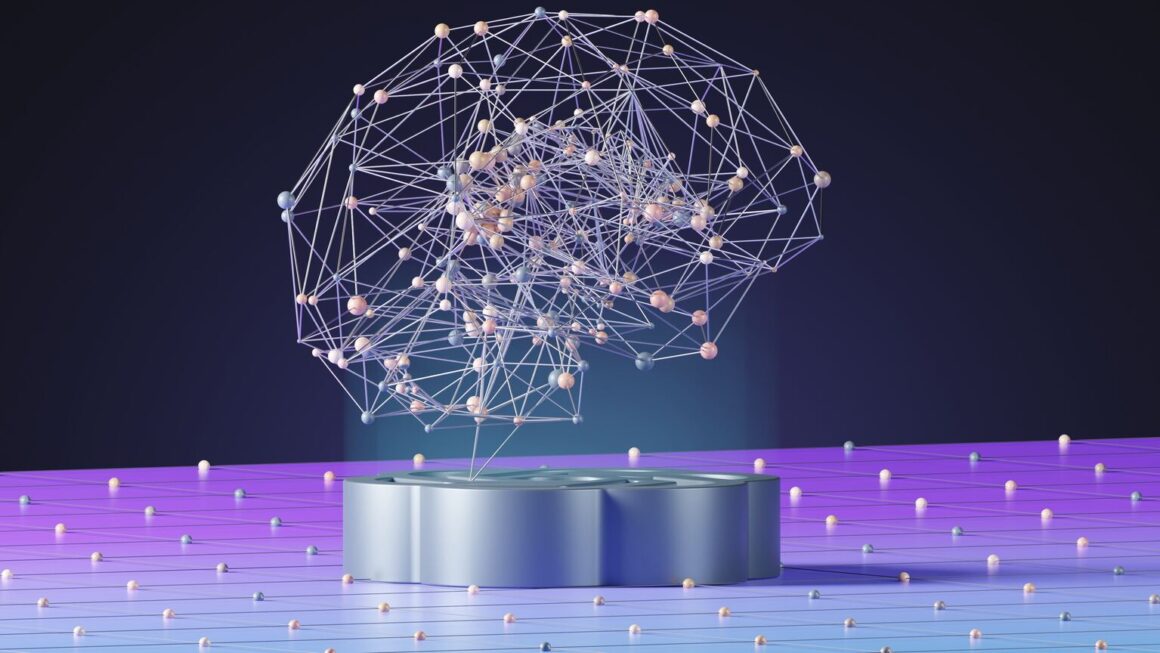Introduction
Brief Overview of What Brain-Computer Interfaces (BCIs) Are
Brain-Computer Interfaces (BCIs), also known as Brain-Machine Interfaces, are a cutting-edge technology that facilitates a direct pathway for communication between the brain and external devices. These interfaces are designed to bypass traditional methods of interaction, like keyboards and mice, allowing for a more intuitive and direct way to control computers, machinery, or even prosthetic limbs, using brain signals.
The Importance of Understanding the Potential and Limitations of BCI
As we stand on the cusp of a technological revolution, understanding the capabilities and constraints of BCIs becomes increasingly crucial. The technology holds immense promise in various sectors—ranging from medical rehabilitation to augmenting human capabilities to unprecedented levels. However, alongside this promise come complex ethical, technical, and social questions that must be rigorously explored. For instance, what are the privacy implications of a device that can potentially read thoughts? Or, how do we ensure equitable access to such potentially life-altering technologies?
In this blog post, we will delve into the complex world of Brain-Computer Interfaces, dissecting their current applications, examining their future potential, and weighing the challenges and ethical implications they bring along. By navigating these diverse aspects, we aim to provide a comprehensive understanding of BCIs—capturing their promise, potential, and the challenges that lie ahead.
Through this exploration, we aspire to give you a balanced perspective on Brain-Computer Interfaces, equipping you with the knowledge needed to understand this revolutionary technology that stands poised to redefine the human-machine relationship.
1: What Are Brain-Computer Interfaces (BCIs)?
Introduction to BCIs
Brain-Computer Interfaces (BCIs) represent a burgeoning field in neuroengineering that aims to create a symbiotic relationship between the human brain and external devices. Through specialized hardware and software, BCIs provide a direct line of communication, bypassing the need for physical movement or vocal expression. This makes it an especially transformative technology for individuals with mobility impairments or communication disorders.
Brief History
The concept of Brain-Computer Interfaces isn’t exactly new; the foundations were laid in the early 1970s through pioneering research in animal models. The initial studies revolved around teaching monkeys to control computer cursors via neural activity. As technology and neuroscience evolved, the first rudimentary BCIs for humans started appearing in the late ’90s and early 2000s. Today, we see a plethora of applications ranging from assisting people with disabilities to piloting drones, and even potentially augmenting human capabilities beyond natural limits.
Core Technology Involved
The core technology of BCIs is a blend of neurobiology, computer science, and engineering. The basic mechanism involves three main components:
- Sensors and Electrodes: These are used to detect and measure the brain’s electrical activity. In some cases, this involves non-invasive methods like EEG (Electroencephalography), while in other, more complex applications, it might require surgically implanted electrodes.
- Signal Processing: The raw electrical activity captured by the sensors is noisy and complex. Specialized algorithms are used to filter and decode these signals, extracting the relevant patterns or “commands” from the user’s brain activity.
- Output Interface: Once the signals are decoded, they are sent to an external device to perform the desired action. This could be as simple as moving a cursor on a screen or as complex as controlling a robotic arm.
In summary, Brain-Computer Interfaces open up new avenues for human-machine interaction by facilitating direct communication between the brain and external devices. Rooted in decades of research and technological advancements, BCIs harness the power of signal processing and machine learning to turn this sci-fi concept into a reality. With diverse applications and profound ethical implications, they stand as one of the most promising and challenging technologies of our time.
2: How Do Brain-Computer Interfaces Work?
Technical Explanation of BCIs
At the heart of any Brain-Computer Interface (BCI) is a complex set of algorithms and hardware designed to convert neural activity into actionable data. It starts with capturing the electrical impulses in the brain using sensors, which are then digitized and decoded to generate commands for external devices. The process is a meticulous blend of neuroscience, data science, machine learning, and electrical engineering.
The Science Behind Capturing and Interpreting Brain Signals
Capturing Brain Signals
- Non-Invasive Methods: The most common non-invasive method is Electroencephalography (EEG), which measures brain activity via electrodes placed on the scalp. EEG is convenient and relatively cheap but lacks the fine-grained resolution for more intricate applications.
- Invasive Methods: For higher resolution and specificity, surgically implanted electrodes can be used. Methods like intracortical microelectrode arrays are implanted directly into the brain tissue, offering a higher signal-to-noise ratio.
Interpreting Brain Signals
- Preprocessing: Once the signals are captured, the data is preprocessed to remove noise and other irrelevant activities.
- Feature Extraction: The next step is to isolate specific features or patterns in the brain activity that correlate with intended actions or thoughts. Algorithms such as Principal Component Analysis (PCA) and Independent Component Analysis (ICA) are commonly used.
- Classification and Decoding: Machine learning models are trained to classify these features and translate them into commands. Common algorithms include Support Vector Machines (SVM) and Neural Networks.
- Feedback Mechanism: To improve accuracy, BCIs often use real-time feedback, allowing the user to adapt to the system and the system to fine-tune its algorithms based on the user’s specific neural patterns.
Examples of Existing Technology
- Neuralink: Elon Musk’s ambitious venture aims to develop ultra-high bandwidth BCIs to connect the human brain with computers. It uses tiny threads—thinner than a human hair—to capture data with minimal damage to the brain tissue.
- Emotiv: This consumer-grade EEG device allows users to control virtual objects with their thoughts. It has various applications including gaming, mental state monitoring, and basic hands-free control mechanisms.
- BrainGate: Specifically designed for paralyzed individuals, this technology interprets brain activity to control external devices, including computer cursors and robotic arms. It uses a small implant, about the size of a baby aspirin, that is inserted into the motor cortex of the brain.
By understanding the technicalities of Brain-Computer Interfaces and observing existing technologies, it becomes evident that BCIs are not just a topic of scientific curiosity but a rapidly evolving field with tangible applications that can significantly impact our lives in the near future.
3: Applications of Brain-Computer Interfaces
Brain-Computer Interfaces (BCIs) have moved beyond the realms of scientific research and theoretical discussions; they’re now shaping multiple aspects of human life. In this section, we will delve into some of the most promising and impactful applications of BCIs, ranging from healthcare to gaming and assistive technologies.
Medical Use-Cases
Neurological Rehabilitation
One of the most groundbreaking applications of BCIs is in the area of neurological rehabilitation. For patients suffering from stroke or spinal cord injuries, BCIs can be used to retrain neural pathways, aiding in the recovery of lost motor functions.
Prosthetic Control
BCIs are being increasingly employed to enhance the functionality of prosthetic limbs. They enable more natural and intuitive control, allowing users to perform complex tasks that were previously difficult or impossible.
Mental Health Treatment
Preliminary research suggests that BCIs could be used to treat mental health disorders such as depression, PTSD, and anxiety. By modulating specific neural circuits, it may be possible to alleviate symptoms and improve patient outcomes.
Gaming and Entertainment
Immersive Experience
BCIs offer the potential for more immersive gaming experiences. Imagine a game that adapts in real-time to your emotional state or level of engagement, creating a deeply personalized experience.
Virtual Reality
The integration of BCIs in Virtual Reality (VR) could result in more interactive and lifelike virtual environments. BCIs could allow for mind-controlled avatars and objects within these environments, removing the limitations imposed by handheld controllers.
Assistive Technology
Communication Aids
For individuals with severe mobility restrictions such as those affected by Locked-in Syndrome or ALS, BCIs can serve as a vital communication channel. Eye-tracking software combined with BCIs can facilitate communication through thought-controlled typing or selection of pre-defined phrases.
Home Automation
BCIs can be integrated with smart home systems, allowing users to control lighting, temperature, and even security systems through their thoughts. This level of control can significantly improve the quality of life for people with mobility impairments.
Mobility Solutions
BCIs are also being explored as a means to control wheelchairs or other mobility devices. These systems can be fine-tuned to individual users, providing an unprecedented level of independence.
By transforming the way we interact with technology, BCIs are not just a futuristic concept but a transformative force in various sectors. From providing new avenues for medical treatment to reshaping the gaming landscape and enabling greater independence for individuals with disabilities, the applications of BCIs are as varied as they are impactful.
4: The Future of Brain-Computer Interfaces
As we venture further into the 21st century, Brain-Computer Interfaces (BCIs) stand on the precipice of becoming a transformative technology. Their applications have already started impacting various sectors, from healthcare to entertainment. However, what does the future hold? This section will explore upcoming research and development, predicted breakthroughs, and the potential societal impact of BCIs.
Upcoming Research and Development
Neural Lace
The concept of a ‘neural lace’—a mesh of electronic fibers seamlessly integrated with the brain—is currently being studied. This could offer a more robust and minimally invasive way to capture and transmit neural data.
Multi-Modal Systems
Research is ongoing to combine BCIs with other forms of biological data, like eye movement or muscle activity. The idea is to develop more sophisticated and reliable control systems.
Quantum Computing
With the advent of quantum computing, we could see exponential improvements in the speed and accuracy of data processing, which is crucial for real-time applications of BCIs.
Predicted Breakthroughs
Thought-to-Text
One of the most eagerly awaited breakthroughs is reliable thought-to-text translation. This could revolutionize how we communicate and interact with our technology.
Artificial Telepathy
Though it sounds like science fiction, researchers are making strides in enabling direct brain-to-brain communication, often termed as ‘artificial telepathy.’
Cognitive Augmentation
Beyond remedial applications, BCIs could be employed to augment human cognition—enhancing memory, decision-making capabilities, or even sensory perceptions.
Societal Impact
Accessibility
One of the most immediate impacts will be increased accessibility for people with physical or cognitive impairments, providing them with new avenues for interaction and independence.
Ethical and Privacy Concerns
As with any technology that delves into the human mind, BCIs raise serious ethical and privacy issues. The potential for misuse or unauthorized data extraction could be a significant societal concern.
The Workforce
BCIs could drastically alter the dynamics of the workforce. On one hand, they could augment human capabilities, but on the other hand, they might exacerbate existing inequalities by being accessible only to those who can afford them.
The future of Brain-Computer Interfaces is a landscape rich with possibilities, but it also comes with its own set of challenges and ethical dilemmas. As we move closer to realizing some of the more advanced applications of BCIs, it’s crucial to engage in multi-disciplinary discussions to guide their development in a manner that maximizes benefits while mitigating risks. The integration of BCIs into our daily lives is not a question of ‘if’ but ‘when,’ making it imperative for us to prepare for a future where our brains are as connected as our devices.
5: Advantages and Potential of BCIs
The allure of Brain-Computer Interfaces (BCIs) is not just rooted in their scientific novelty but also in their transformative potential. This section aims to outline the various advantages and immense potential that BCIs present in multiple facets of human life—from boosting efficiency and productivity to pioneering medical advancements and enabling new frontiers in communication.
Efficiency and Productivity
Speed of Execution
The ability to control devices directly through thoughts can considerably speed up tasks, reducing the time lag usually involved in manual input methods.
Multi-Tasking
BCIs could enable a level of multi-tasking that is currently unimaginable, as users could control multiple devices or applications simultaneously through different neural pathways.
Enhanced Learning
There is also potential for BCIs to improve cognitive training and learning. Through direct neural feedback, learners could get real-time data on focus levels, retention, and comprehension, allowing for more personalized and effective learning experiences.
Medical Advancements
Remote Monitoring
BCIs could be used to monitor neurological conditions in real-time, providing invaluable data that could be used for both diagnosis and treatment.
Surgical Precision
In the medical field, BCIs could facilitate robot-assisted surgeries, allowing for more precise control and potentially reducing the margin for human error.
Enhanced Rehabilitation
BCIs could significantly improve the quality and speed of rehabilitation from neural or muscular injuries by facilitating targeted therapies based on real-time neural data.
Communication Breakthroughs
Accessibility
For those with communication impairments, BCIs offer the promise of a new channel for interaction, enabling communication through thought rather than speech or writing.
Global Interaction
In the long run, BCIs could also break down language barriers. If thought-to-text technology becomes sophisticated enough, it could enable real-time translation, making global interaction seamless.
Emotional Communication
Beyond words, BCIs could eventually capture and convey emotional states or even more complex ideas, opening up unprecedented dimensions in interpersonal communication.
In summary, the advantages and potential of Brain-Computer Interfaces are vast and transformative. They hold the promise of redefining human-machine interaction, revolutionizing healthcare, and breaking down barriers in communication. While challenges and ethical considerations abound, the incredible benefits make BCIs a frontier of scientific research that is poised to significantly impact our future.
6: Challenges and Ethical Implications
While the possibilities of Brain-Computer Interfaces (BCIs) are tantalizing, it’s essential to temper enthusiasm with a sober look at the challenges and ethical implications that accompany this burgeoning technology. This section aims to address the technical limitations, ethical concerns, and privacy issues that are crucial to consider as we navigate the future of BCIs.
Technical Limitations
Resolution and Accuracy
Current non-invasive methods like EEG provide a relatively low resolution, which restricts the complexity of tasks that can be performed. On the other hand, invasive methods that offer higher resolution pose risks like infection or tissue damage.
Computational Power
Real-time processing of neural data requires significant computational power, and we are yet to develop algorithms that can decode brain signals with the speed and accuracy needed for complex tasks.
User Training
BCIs often require a calibration period during which the user needs to adapt to the system. This can be time-consuming and is not always effective, limiting the technology’s widespread adoption.
Ethical Concerns
Inequality and Accessibility
BCIs could exacerbate social inequalities by being accessible only to those who can afford them, creating a divide between the ‘neurally enhanced’ and the rest.
Cognitive Liberty
The potential to manipulate or even control thoughts and actions via BCIs raises serious ethical questions about cognitive liberty and individual autonomy.
Consent and Exploitation
The use of BCIs in vulnerable populations, such as children or individuals with cognitive impairments, could raise issues related to informed consent and potential exploitation.
Privacy Issues
Data Security
The intimate nature of the data collected by BCIs poses significant security risks. Unauthorized access could lead to unprecedented invasions of privacy, including the extraction of memories or thoughts.
Third-Party Access
Companies or governments could potentially access and misuse BCI data for surveillance or other unethical purposes. Regulations governing data access and usage are currently insufficient.
Identity Theft
The nature of BCI data raises the possibility of a new form of identity theft, where not just personal information, but thoughts and even emotional states could be stolen.
While the challenges and ethical implications are daunting, they are not insurmountable. They serve as a reminder that as we develop and adopt new technologies, we must proceed with caution, thoughtful deliberation, and a commitment to equitable and ethical practices. A multidisciplinary approach involving technologists, ethicists, policymakers, and end-users will be critical in ensuring that BCIs are developed in a way that maximizes benefits while minimizing harm.
7: Brain-Computer Interfaces vs Traditional Computing
As Brain-Computer Interfaces (BCIs) increasingly capture public imagination, it’s worth taking a moment to compare them with traditional computing interfaces, such as keyboards, mice, and touchscreens. Each has its own set of pros and cons, and understanding these can help us appreciate the unique opportunities and challenges presented by BCIs.
Comparison Between BCIs and Traditional Computing Interfaces
Input Speed
- BCIs: The potential to control devices directly through thoughts may lead to faster input speed.
- Traditional Computing: Physical inputs like typing or tapping can be slower and may require more cognitive effort for complex tasks.
Learning Curve
- BCIs: Typically have a steeper learning curve as users need to adapt to a completely new form of interaction.
- Traditional Computing: Generally easier to pick up, as they build on skills like hand-eye coordination that we learn from a young age.
Accessibility
- BCIs: Could offer new methods of interaction for individuals with disabilities who may find traditional interfaces challenging.
- Traditional Computing: Often less accessible to people with mobility or sensory impairments, although assistive technologies are improving.
Complexity of Tasks
- BCIs: Current limitations in resolution and processing speed make them less suitable for intricate tasks.
- Traditional Computing: More suited for tasks requiring high precision and multiple simultaneous inputs.
Pros and Cons
BCIs
Pros
- Enhanced Accessibility: Could greatly benefit people with disabilities.
- Potential for Speed: Direct thought-to-action has the potential to be faster than manual input.
- New Forms of Interaction: BCIs open the door to entirely new ways of engaging with technology, such as emotional or even subconscious inputs.
Cons
- Technical Limitations: Issues with resolution, speed, and reliability still need to be overcome.
- Ethical Concerns: Risks related to privacy, cognitive liberty, and data security.
- Cost: Likely to be expensive, especially for high-resolution, invasive methods.
Traditional Computing Interfaces
Pros
- Reliability: Well-established and generally reliable for a wide range of tasks.
- User Familiarity: Most people are already comfortable with these forms of interaction.
- Cost-Effectiveness: Generally less expensive and easier to implement on a large scale.
Cons
- Limited Accessibility: May not be usable by everyone, particularly those with certain disabilities.
- Physical Constraints: Require motor skills and may cause issues like repetitive strain injuries.
- Lack of Personalization: Less capable of adapting to an individual’s unique needs or emotional states.
In summary, while BCIs offer fascinating possibilities that could redefine our relationship with technology, traditional computing interfaces remain more practical and accessible for most current applications. As BCIs continue to develop and overcome their current limitations, it’s likely that we’ll see a hybrid landscape where they complement rather than replace traditional interfaces, each excelling in areas where the other falls short.
Conclusion
As we’ve explored throughout this blog post, Brain-Computer Interfaces (BCIs) represent a tantalizing frontier in human-technology interaction. They offer transformative potential across various sectors—be it healthcare, gaming, or even the way we communicate. The ability to control devices and convey information directly through neural signals opens up unprecedented opportunities for efficiency, accessibility, and new forms of interaction.
However, it’s essential to approach this technological marvel with both optimism and caution. As with any groundbreaking technology, BCIs come with their own set of challenges and ethical quandaries. Technical limitations like low resolution in non-invasive methods, high costs for invasive methods, and the computational power required for real-time processing are hurdles yet to be overcome. Moreover, ethical concerns about data privacy, cognitive liberty, and social inequalities cannot be ignored and necessitate multi-disciplinary discussions and robust regulatory frameworks.
As we look to the future, the question isn’t whether BCIs will become a part of our everyday lives, but how they will integrate and what impact they will have. The potential for societal transformation is immense—from revolutionizing medical treatments to potentially enhancing human cognition and breaking down barriers in global communication. However, this future is not without its risks. A well-considered approach, involving technologists, ethicists, and policymakers, will be crucial in harnessing the potential of BCIs while minimizing their pitfalls.
In conclusion, Brain-Computer Interfaces offer a glimpse into a future where the lines between human cognition and technological interfaces blur. As we stand on the cusp of this new era, it’s imperative that we tread carefully, ensuring that the technology serves to augment human capabilities and enrich lives, rather than exacerbate existing societal challenges. The journey ahead is filled with promise and peril, and how we navigate it will shape the future of not just computing, but humanity itself.






